Starting now locally and lasting for several months as warm weather moves north is the springtime treat of the Linden Tree. Also known as Basswood, the tree puts on tender new leaves that can be eaten just like lettuce. Later in the year it produces seeds that aren’t a bad chocolate substitute if used correctly. Tree branches were also tree used in pipe making of which I have fond memories. To read more about the Basswood tree, go here.

Weeping Willows are probably the best-known member of the genus followed by Pussy Willows. Photo by Green Deane
If I were to say wild foods are probably better for you than cultivated varieties I’d probably be preaching to the choir. But some recent research not only suggests so but dramatically. The topic being investigated was how groups of molecules can slow biological aging. It’s difficult to do such research on humans as they tend to live a long time. Yeast, however, do not but in some ways can represent human cellular processes. The researchers exposed yeast to six different extractions, all of which increased their chronological lifespan. One extended the cellular life of yeast by an average of 475 percent and maximum chronological lifespan 369 per cent. That’s on par with living four times longer. Which extract worked the best? The one from Willow Bark, which has been used like an aspirin for thousands of years. Willow bark has salicin, which we might call a crude or natural aspirin. In the mid-1800s it was artificially made and by the end of the century turned into a form kinder on the tummy by adding an acetyl group making acetylsalicylic acid (which is why when your aspirin goes bad it smells like vinegar.) When you take aspirin your stomach separates the acetyl from the salicylic acid. I chew willow branch tips from time to time as needed. Perhaps as much as two-thirds of all medicine starts with plants, which are little chemical factories. The problem with herbalism, however, is consistency of product (think of the problems wine makers go through each year to produce a good vintage.) Herbals also tend to be a package of several chemicals rather than one. So Big Pharma probably won’t have a patentable willow bark extract anytime soon but we can harvest as much willow as we want now. To read more about willows go here.
This past week someone told me they fermented Spiderwort. I’ve eaten a lot of Spiderwort (a Tradescantia) but had not considered fermenting them. So I put it on my food list of things to do. My garden has been producing much of late and I have been fermenting a lot. So far that’s three quarts of radishes, two gallons of mustard greens, one gallon of collards, one gallon of lettuce and a pint of Nasturtiums. I’ve also managed to dry a few quarts of scallions. That reminds me of a comment on the facebook page of EatTheWeeds. Someone is drizzling Biden alba leaves (Spanish Needles) with olive oil and salt then baking them into something similar to kale chips. I’ve got to try that as well. On the Green Deane Forum — the sign up form is on the right — there are several sections devoted to preserving cultivated and wild food.
A decade ago no one ate avocado seeds and I’m not sure they are edible now. But I do know many copycat internet sites say they are edible. I am extremely suspicious of that for several reasons. The first is that I am not aware of any native tribes eating avocado seeds: Ancient, hungry people did not eat the seeds. Ponder that. They certainly ate the avocado fruit but did not eat the seeds. There has to be a reason(s) for that which could range from 1) the seeds are bitter 2) it required too much work for the calories received 3) it made them acutely sick 4) was toxic over the long-term 5) they used the seed medicinally and it did not occur to them to eat it, and 6) we did not ask or they chose not to tell us they ate them. I am aware of some studies that say it is too bad we throw the seeds away and we should figure out how to use them but they don’t provide any answers.
Also, I have never actually seen someone prepare and eat an avocado seed in person in real life. That’s very important. A video can be fictional even if sincerely produced. The routine site says dry the seed, powder it, and sprinkle in this or that. By using only a little seed powder at a time consumers could be reducing the possible acute nature of the seed but could still be creating long-term problems. Those could include such things as killing off liver cells, clogging small veins, unbalancing hormones, up or down regulating genes or killing off gut bacteria. The seed does have anti-fungal properties and extensive folk medicine use. I know the several people who have written to me over the years saying they were going to eat avocado seeds have never written back telling me it was a success. Lastly while other members of the genus have leaves that can be used by humans for flavoring contemporary avocado leaves have chemicals that can make humans sick. The leaves and fruit are also toxic to many animals. Add no history of consumption and all that spells caution. If someone says the seeds are edible ask them to prove it before you eat it. That said we do have three relatives of the Avocado growing locally that can be used. If you want to read about them, go here.
Upcoming Foraging Classes:
Saturday, March 26th, Dreher Park, 1200 Southern Blvd., West Palm Beach, 9 a.m.
Sunday, April 3rd, John Chestnut County Park: 2200 East Lake Road, Palm Harbor, Florida, 9 a.m.
Sunday, April 10th, Wekiva State Park, 1800 Wekiwa Circle, Apopka, Florida 32712. 9 a.m.
Sunday, April 17th, Bayshore Live Oak Park, 2200 East Lake Road, Port Charlotte, Florida. 9 a.m.
Sunday, May 1st, Wickham Park: 2500 Parkway Drive, Melbourne, Florida 9 a.m.
Saturday, May 7th, Blanchard Park, 10501 Jay Blanchard Trail, Orlando, FL 32817. 9 a.m.
For more information about classes go here.
All of Green Deane’s videos are available for free on You Tube. They do have ads on them so every time you watch a Green Deane video I get a quarter of one cent. Four views, one cent. Not exactly a large money-maker but it helps pays for the newsletter. If you want to see the videos without ads and some in lightly better quality you can order the DVD set. It is nine DVDs with 15 videos on each. Many people want their own copy of the videos or they have a slow service and its easier to order then to watch them on-line. They make a good gift for that forager you know. Individual videos can also be ordered. You can order them by clicking on the button on the top right of this page or you can go here.
And for those of you who like Loquats — mentioned in last week’s newsletter — there is a Loquat Festival this coming Saturday, March 26, 2016, in New Port Richey, FL. It’s their Third Annual Loquat Festival, 9 to 2, at 5580 Frances Avenue. For more information go here.
This is newsletter 201.
If you would like to donate to Eat The Weeds please click here.

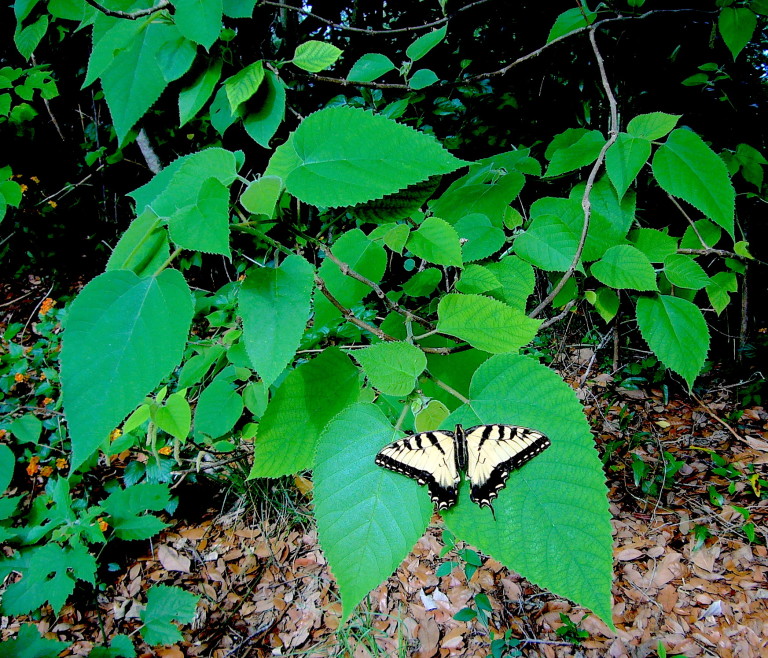
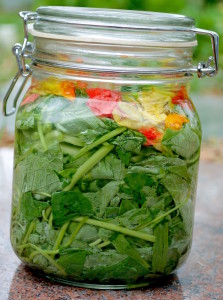
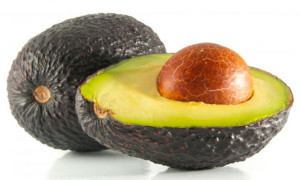
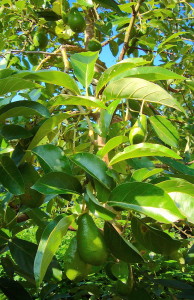
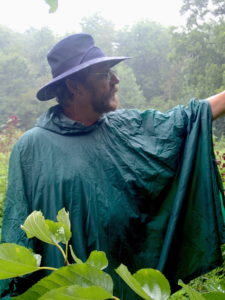


Issues saving the newsletter often unchecks the permission to make comments. It used to allow automatically. An update now requires that each time the page is saved the comment section must be checked.
From Farouk Hussein: About willow bark… we have been furnished with very useful information plus the happy feeling we have gained by returning to the good old days of Frank Sinatra and “Willow Weep For Me.” In chemistry, I think even at the university level, students — particularly those concerned with the Hippocratic Oath, should enjoy knowing about chewing Willow trigs in reducing childbirth pain. Still more useful is to know how the word “ASPRIN” was born. As said in the article “Willow Weep For Me” related t natural rooting/growth hormone for plants, indeed salicylic acid functions as a plant hormone with roles in growth and development, photosynthesis, transpiration, ion-uptake and transport et cetera of plants. Again, it is not a good education to limit students on with naming salicylic acid a 2-hydroxybenzoic acid of molecular formula C7H603 or just mention the laboratory and industrial (Kolbe-Schmitt reaction) preparations. Let me add to the uses of the acid derivatives, the treatment of dandruff by virtue of its effect on skin cells — just now read on a plastic bottle of “Healthier Pentene Hair Shampoo” benzyl salicylate as one ingredient amongst others. I love the fragrance of the derivative methyl salicylate (methyl 2 – hydroxybenzoate C8H803) also called Wintergreen where it mostly occurs. I can still sense the good fragrance inside and around the organic laboratory where this example of ester had been synthesized. It is used in foods and beverages as well as in liniments. That said, it is also worthy to google: Aspirin and related derivatives of salicylic acid — NCBI. Finally, and personally, a chemical reaction I wished to run before I had to retire was between the salicylate anion and compounds like cisplatin (well-known chemotherapeutic) hoping to obtain a more effective agent.
About Willow bark, we have been furnished with very useful information plus the happy feeling we have gained by returning to the old good days of Frank Sinatra and “Willow weep for me”. In chemistry, I think even at university level, students – particularly those concerned with Hippocrate’s oath should enjoy knowing about chewing Willow leaves in reducing childbirth. Still more useful is to know how “ASPIRIN” word was born. As said in the article “Willow Weep For Me”, related to natural, rooting/ growth hormone for plants, indeed salicylic acid functions as a plant hormone with roles in growth and development, photosynthesis, transpiration, ion – uptake and transport, etc. of plant. Again it is not good education to limit students only with naming salicylic acid as 2 – hydroxybenzoic acid of molecular formula C7H6O3 or just mention the laboratory and industrial (Kolbe – Schmitt reaction) preparations. Let me add to the uses of the acid derivatives, the treatment of dandruff by virtue of its effect on skin cells – just now read on a plastic bottle of “Healthier Pentene Hair Shampoo” benzyl salicylate as one ingredient amongst others. I love the fragrance of the derivative methyl salicylate (methyl 2 – hydroxybenzoate C8H8O3) also called oil of Wintergreen where it mostly occurs. I can still sense the good fragrance inside and around the organic laboratory where this example of ester had been synthesised. It is used in foods and beverages as well as in liniments. That said it is also worthy to google: Aspirin and related derivatives of salicylic acid – NCBI. Finally, and personally, a chemical reaction I wished to run before I had retired was between the salicylate anion and compounds like cisplatin (well known chemotherapeutic) hoping to obtain a more effective agent.